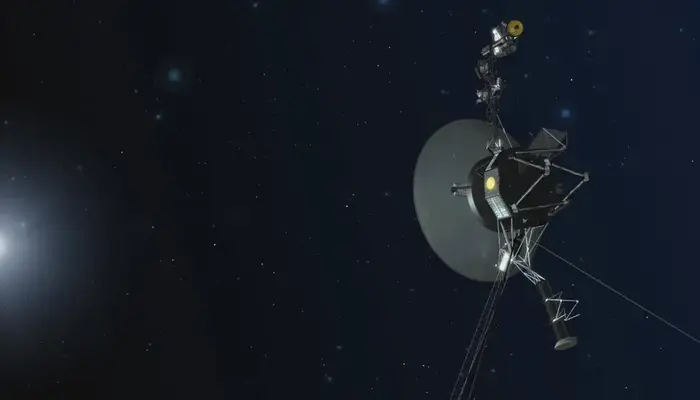NASA’s Voyager 2 has shut down its Plasma Science Experiment, marking the end of one of the mission’s longest-running scientific tools, after nearly five decades and a journey spanning 15 billion miles. This instrument, a testament to MIT’s pioneering engineering, significantly shaped our understanding of both our solar system and the interstellar medium, detecting particles and plasma currents from planetary environments and the solar wind.
The Historic Role of Voyager’s Plasma Science Experiment
The Plasma Science Experiment (PSE), also known as the Plasma Spectrometer (PLS), has been one of the most productive tools on Voyager 2. Designed by MIT engineers, the PSE measured charged particles across all four giant outer planets and the interstellar medium. It enabled NASA to confirm when Voyager 2 crossed the heliosphere, marking the spacecraft’s entry into interstellar space. Through its four Faraday cup detectors, the PSE measured ions and electrons, allowing scientists to determine plasma velocity, density, and temperature across the vast solar system.
Key Discoveries Across the Solar System
Over its long journey, the Plasma Science Experiment achieved multiple landmark discoveries. At Jupiter, it revealed the Io torus—a plasma ring around Jupiter, fed by volcanic material from its moon Io. Saturn’s magnetosphere, loaded with water and oxygen from the planet’s icy moons, was another major finding. Later, as Voyager 2 passed Uranus and Neptune, the PSE documented how the tilted magnetic fields of these planets created unique density features.
The PSE also detected the termination shock, where the solar wind slows and plasma density rises, leading to Voyager’s historic heliopause crossing. By identifying a halt in the outward solar wind flow, the PSE confirmed Voyager 2’s entry into the interstellar medium—a monumental moment in space exploration.
Read: OpenAI Launches ChatGPT Search, New Challenge to Search Engines
Shutting Down to Extend the Mission
To conserve power and extend Voyager 2’s mission life, engineers recently decided to shut down the PSE. The power from the spacecraft’s decaying plutonium generator has decreased over the years, losing around 4 watts annually. Shutting down the PSE will redirect power to the remaining instruments, allowing them to operate potentially into the 2030s. These instruments, though fewer, will continue monitoring cosmic rays, magnetic fields, and plasma waves, keeping Voyager’s legacy of discovery alive.
Voyager’s Legacy and Its Future Beyond the Solar System
Voyager 2 and its twin, Voyager 1, were launched in 1977 for what was originally planned as a four-year mission. They have since traveled farther than any other human-made objects, pushing the boundaries of space exploration and engineering. Though the PSE has shut down, the spacecraft will continue its journey through the Milky Way, eventually reaching the nearest stars in about 30,000 years. Estimates suggest that the Golden Records, placed on each probe as messages from Earth, could survive for 5 billion years. If the Milky Way collides with the Andromeda galaxy as predicted, Voyager may even be ejected into intergalactic space, where it could exist for trillions of years.
An Enduring Tribute
Voyager 2’s Plasma Science Experiment will be remembered for its unprecedented contributions to space science. As a tribute, MIT engineer Robert Butler inscribed the names of the PSE’s development team on the device, along with New Hampshire’s state motto, “Live Free or Die.” Though this legendary instrument is now off, its data and legacy continue to inspire the pursuit of knowledge across the cosmos.
Follow us on Google News, Instagram, YouTube, Facebook,Whats App, and TikTok for latest updates
